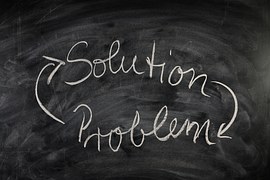Medical Care After a Car Wreck

Been in an Accident? Next Steps for Your Medical Care.
We have clients who have been involved in an accident, whether a car wreck, slip and fall, dog bite, or other injury, and they often ask what they should do about medical care, and whether it will hurt or help their court case. Our answer is always the same: you and your healthcare providers should make your medical care decisions based purely on what’s best for your health. No claim or lawsuit should ever affect your medical care decision-making.
Many also have questions about what to do immediately after an accident. Here are some frequently asked questions and our typical responses. However, remember that each case is unique, and our lawyers can help you navigate your individual circumstances. Call us today at (901) 372-5003.
Should I seek immediate treatment for injuries after a car wreck?
Yes. It is best to seek prompt medical care so that your injuries can be properly evaluated by trained medical personnel. According to DMV.org, it’s important to understand that you may have an injury, even if you aren’t totally sure. Many insurance adjusters will hold delays in medical treatment against you, even assuming you were merely trying to do the right thing by taking a conservative, wait-and-see approach.
What if I’m concerned about the cost of medical care?
If you were injured in a car wreck, you may (and should) rely on your health insurance to cover your treatment. If not, but you have automobile insurance, your policy probably contains Medical Payment Coverage up to a certain amount, and so you may be able to recover some of your medical expenses from your own insurance company. Depending on what happened to you and whether someone else is responsible, you may be also able to recover your medical expenses from someone else’s liability insurance company.
What else should I do after an accident if I think I might have a claim?
If you are able, get the contact information of any eyewitnesses. Get a copy of the Police Report. Take photos of your injuries. If you’ve been in a car accident, take photos of your car and the scene, if possible. If you are involved in a slip and fall or some other type of accident, take photos of the scene of the accident and its condition at the time of your injury. Keep a list of the medical providers you see, and the limitations and pain you suffer. Claims and lawsuits can sometimes take months to resolve, and you will be surprised at how memories fade. Make a list of any prescription medications or other medicines that you have to take because of the accident, and keep records of the costs. Document any other expenses you incur because of the accident.
What if I have to miss work?
You may be entitled to recover for lost wages. Obtain written documentation from your employer of the days, hours, and wages you missed because of the accident.
Frequently Asked Questions
You can find answers to more Frequently Asked Questions on our website by clicking here.
Patterson Bray PLLC
8001 Centerview Parkway, Suite 103
Memphis, Tennessee 38018
(901) 372-5003 Office



 Let’s discuss legal problem solving. Does your lawyer merely work the problem, or solve the problem? There’s a difference, you know.
Let’s discuss legal problem solving. Does your lawyer merely work the problem, or solve the problem? There’s a difference, you know. Law FAQ: I was in a car wreck in Tennessee, and I may be partially at fault. Do I still have a legal claim?
Law FAQ: I was in a car wreck in Tennessee, and I may be partially at fault. Do I still have a legal claim?